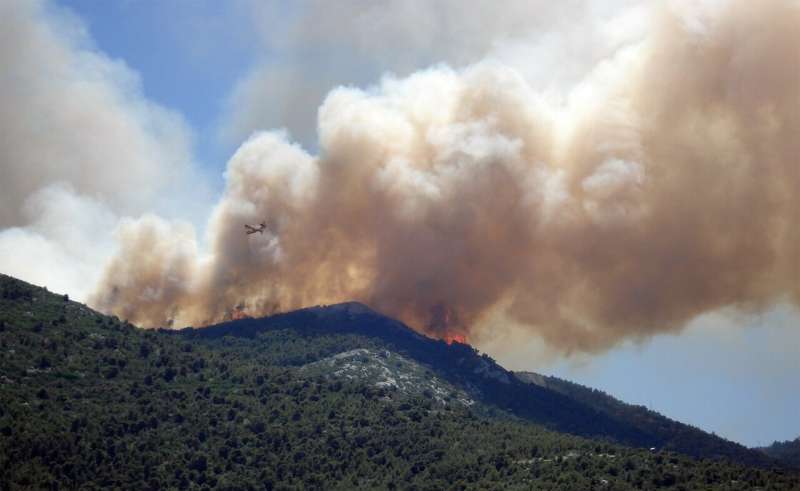February 3, 2023 report
This article has been reviewed according to Science X's editorial process and policies. Editors have highlighted the following attributes while ensuring the content's credibility:
fact-checked
peer-reviewed publication
trusted source
proofread
How smoke generated from large wildfires can impact local weather and make fires worse

A team of atmospheric scientists at Nanjing University, working with two colleagues from Tsinghua University and another from the Max Planck Institute for Chemistry, has found that the impact of smoke generated by large wildfires can result in increased fire intensity. In their study, published in the journal Science, the group used a variety of tools to measure the impact of soot and other particles emitted into the air during large wildfires.
Planetary scientists report that large wildfires have grown in both number and strength over the past several decades. Though it is unproven, most in the field suspect the change is due to climate change. In this new effort, the team in China wondered what sort of impact the soot from smoke emitted from such fires might be having on local weather.
They collected data from satellites and ground observation sensors to train a computer model that used both chemistry information and weather data to track changes in the air and on the ground during large wild fires. They studied the impact in two places—Southeast Asia and the West Coast of the United States.
To learn more about fires in Mediterranean-type climates, such as California, the researchers focused intently on data collected from the August Complex fire that burned more than 1 million acres in 2020. The model revealed that soot from the fire led to the creation of a blanket of smoke over the area and around it, trapping heat and preventing sunlight from reaching the ground—a situation that led to thermal instability. Due to that instability, air was sucked under the blanket of smoke, resulting in high-speed winds. And the wind led to dryer conditions, making the fire more intense.
In places like Southeast Asia, things were different, though they produced nearly the same result. The model showed that as smoke rose in humid air, it caused thunderstorms that resulted in cooling the land below—and that resulted in preventing seasonal monsoons from moving into the area, making things drier overall. Those conditions led to more intense fires.
More information: Xin Huang et al, Smoke-weather interaction affects extreme wildfires in diverse coastal regions, Science (2023). DOI: 10.1126/science.add9843
Journal information: Science
© 2023 Science X Network




















